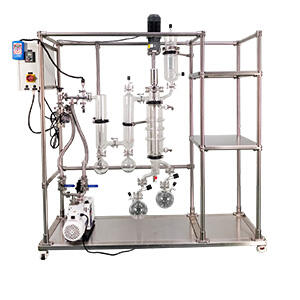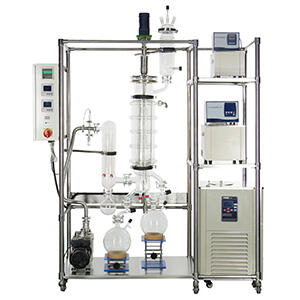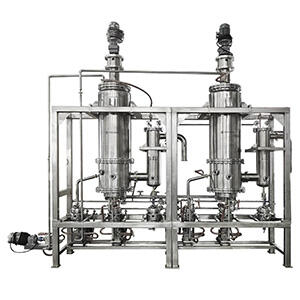Tea oil is tea seed oil, which is promoted by the Food and Agriculture Organization of the United Nations as a key healthy high-grade edible oil. However, the free fatty acids contained in tea oil have certain negative effects on the storage, nutriti...
Share
Tea oil is tea seed oil, which is promoted by the Food and Agriculture Organization of the United Nations as a key healthy high-grade edible oil. However, the free fatty acids contained in tea oil have certain negative effects on the storage, nutritional value, medicinal value and industrial production of tea oil. The traditional deacidification process of tea oil is alkali refining deacidification method, which is complicated and will destroy the effective ingredients of tea oil, while generating a large amount of waste. Molecular distillation, as a liquid-liquid separation technology with low distillation temperature, high vacuum degree and high separation degree, is very suitable for the deacidification of tea oil.

| Project | National first-class tea oil quality | Tea oil | Deacidified tea oil |
| Color | Light yellow to orange | Light yellow | Light yellow |
| Transparency (20℃) | Clear | Slightly turbid | Clear |
| Moisture and volatile matter content/% | ≤ 0.10 | 0.18 | 0.05 |
| Insoluble impurities content/% | ≤ 0.05 | 0.18 | 0.04 |
| Acid value (in KOH) (mg/g) | ≤ 2.0 | 2.47 | 0.12 |
| Peroxide value/(g/100g) | ≤ 0.25 | 0.25 | 0.12 |
After being processed by Yuanhuai molecular distillation products, the deacidification rate of crude tea oil is ≥ 95 %, reaching the national first-level quality standard for pressed finished tea seed oil.



